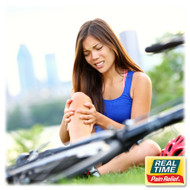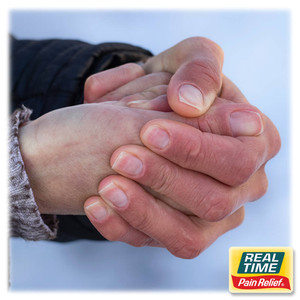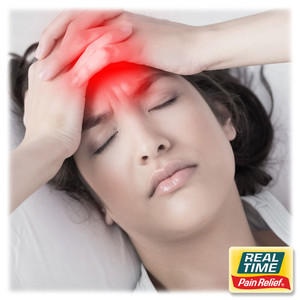5 Tricks to Recover from a Pulled Muscle
1st Sep 2023
Dealing with a pulled muscle? Here are 5 tricks to help you recover quickly!
Most people who are active will eventually pull or strain a muscle.
Although a pulled muscle can occur in any muscle, certain muscles are more vulnerable to a pull than others. The most common sites of a pulled muscle are the shoulder, neck, hamstring, and lower back.
What Can Cause a Pulled Muscle?
Your muscles are made up of thousands of muscle fibers. Overexertion or awkward movements can stretch or tear some of the fibers leading to a pulled muscle. Muscles strains are often acute, which means they occur suddenly from trauma to the muscle. Pulled muscles can also become chronic from overuse and repetitive movements.
Pulled muscles often develop due to not warming up properly, especially in cold weather. Your muscles tend to be stiffer in cold weather and may be more susceptible to an injury. A pulled muscle can also occur due to poor posture, such as using bad form when lifting.
Chronic pulled muscles can develop as a result of repetitive activities that place added strain on the same muscle. For example, sitting at your desk in the same position for hours can place strain on your shoulders or neck and lead to a pulled muscle.
Symptoms of a Pulled Muscle
In most cases, you feel a pulled muscle as soon as the injury occurs. The pain is often sudden and sharp. The severity of the pull can vary. Mild pulled muscles may cause symptoms that do not interfere with daily activities. Symptoms usually resolve in a few weeks.
A severely pulled muscle may lead to symptoms that limit activities, and it can take several months to heal.
Symptoms of a pulled muscle may include the following:
- Stiffness
- Muscle spasm
- Pain
- Swelling
- Bruising
- Decreased range of motion
5 Tricks to Recover from a Pulled Muscle
Your recovery from a pulled muscle can vary depending on the muscle injured and the extent of the strain. If you have a mild to moderate pulled muscle, it can usually be treated at home. In cases of a severe strain, it’s best to see a doctor and determine if additional treatment is needed.
Typically, recovery from a pulled muscle will take a few weeks. As soon as you feel the pull, stop the activity that caused the injury. Continuing to push through the pain can lead to a more severe muscle pull.
After you stop the activity, the following treatment may help speed recovery:
#1) Place an Ice Pack on Pulled Muscle
Apply an ice pack to the injured muscle as soon as possible. Ice should be used for at least the first three days after the injury. Apply an ice pack for about 15 minutes several times a day. Ice helps decrease the inflammation and swelling that develops with a pulled muscle.
#2) Alternate Heat and Ice
After the first few days, it may be useful to alternate heat and ice. Applying heat to the area promotes blood flow and can ease muscle stiffness. If you find the heat helps more than ice, use heat only.
#3) Use a Topical Pain Relief Lotion
Painkillers like non-steroidal anti-inflammatory medications often have systemic side effects, such as stomach upset. Plus, over-the-counter pain medication can interfere with the natural inflammatory process. A topical pain relief lotion can decrease discomfort and stiffness without the unwanted side effects of oral pain medication. Your best bet for a pain relief lotion is one that has ingredients such as menthol, arnica, chondroitin, and emu oil.
#4) Place a Compression Wrap
Carefully place a compression wrap on the sore muscle to help decrease swelling. Just be sure not to wrap it too tightly, or you will cut off the circulation. A compression bandage also might help provide a little stability and support for the muscle while it heals.
#5) Use a Pain Relief Bath Bomb
Add a pain relief bath bomb to a warm bath to get some fast relief. A bath bomb containing ingredients like peppermint oil and peppermint extract help to promote relaxation and has a cooling effect on the muscle. A bath bomb that contains chamomile is also a good choice to ease discomfort. Pain relief bath bombs containing arnica montana can help to decrease swelling, bruising, and soreness.
Additional Recovery Tips
There are a few additional things to keep in mind regarding pulled muscles. Consider the following suggestions:
- See a doctor if the muscle is numb, has blood coming out of it, or if the pain does not start to ease after a couple of weeks.
- Don’t rest the muscle for too long. Although it’s helpful to avoid activities that make the pain worse, complete rest may add to stiffness. Light activity promotes circulation and may help with healing.
- Always warm-up properly before exercise. Jumping directly into vigorous exercise or sports can pull a cold muscle. Make sure to warm-up first. After exercise, consider doing some light stretching to keep your muscles flexible. Flexible muscles are less likely to get pulled.
Pain Relief You Can Trust® Since 1998
For over 20 years, families across the U.S. have turned to Real Time’s lotions and creams for PAIN RELIEF YOU CAN TRUST®. From Lifestyle Essentials, through our Nujuvena line, to Pain Relief Formulas, Real Time has you covered. LEARN MORE
Sources
- https://orthoinfo.aaos.org/en/diseases--conditions...
- https://www.hopkinsmedicine.org/orthopaedic-surger...
- https://my.clevelandclinic.org/health/diseases/102...





